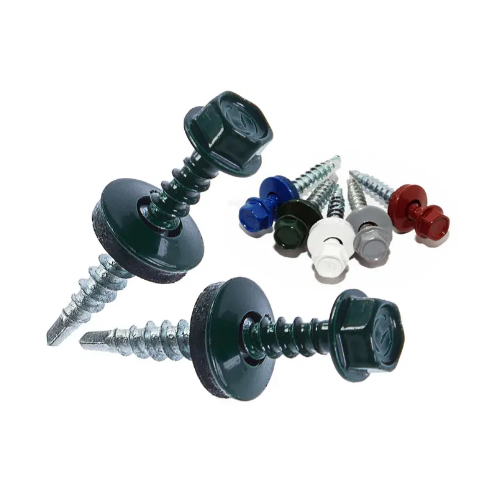Lock Washers and Flat Washers Manufacturing Companies Overview and Insights
Understanding Lock Washers and Flat Washers Factories and Manufacturing Processes
When it comes to the world of fastening solutions, two essential components are lock washers and flat washers. These small yet crucial items play a significant role in ensuring the stability and integrity of assembled products. As industries continue to evolve, the demand for high-quality washers increases. Consequently, this has led to the emergence of specialized factories dedicated to the production of these components.
What Are Lock Washers and Flat Washers?
Lock washers are designed to prevent loosening under vibration or torque. They typically have a split or toothed design, which grips the bolt or screw as it is tightened. This innovative design creates a locking effect, reducing the risk of loosening over time. Lock washers are commonly used in applications where machinery is subjected to movement or vibration, such as in automotive and aerospace industries.
On the other hand, flat washers, which are slightly simpler in design, serve primarily to distribute the load of a threaded fastener. By providing a smooth bearing surface, flat washers help to prevent damage to the material being fastened and enhance the overall stability of the assembly. They are widely used in various applications, from household items to industrial machinery.
Manufacturing Process of Washers
The production of lock washers and flat washers involves several steps, starting from raw material selection to the final packaging of the products. Factories often begin with materials such as steel, stainless steel, or brass, depending on the required durability and application of the washers.
1. Raw Material Preparation The chosen materials undergo processes that may include cutting, rolling, or stamping. Factories utilize precision machinery to ensure uniformity in size and shape.
2. Forming This is where the actual shape of the washer is created. For flat washers, a simple punching or stamping process may suffice. However, lock washers require more intricate operations to form their distinctive locking features. Techniques like bending or twisting may be employed to achieve the desired design.
lock washer flat washer factories

3. Heat Treatment Heat treatment processes, such as hardening and tempering, can enhance the mechanical properties of the washers. This is particularly crucial for lock washers, which need to maintain their locking capability under high stress.
4. Surface Finishing Washers undergo surface finishing to enhance corrosion resistance, improve appearance, and achieve the desired friction characteristics. Common finishing methods include galvanizing, phosphate coating, and anodizing. These treatments not only extend the lifespan of the washers but also ensure compatibility with various environments.
5. Quality Control Before the final products are packaged, rigorous quality control measures are implemented. Factories often conduct tests for tensile strength, dimension accuracy, and corrosion resistance to ensure that the washers meet the relevant industry standards.
6. Packaging and Distribution Once quality checks are complete, washers are carefully packaged to prevent damage during transportation. Factories often supply these products in bulk to distributors or directly to manufacturers who require large quantities for their assembly lines.
The Importance of Reliable Factories
In today's manufacturing landscape, the reliability of washer factories is paramount. Companies must ensure that they source their washers from reputable manufacturers who adhere to industry standards. This guarantees that their assemblies remain secure and operational.
Moreover, with the rise of global supply chains, the choice of washer factories has expanded. Organizations can now select between domestic and international suppliers, weighing factors such as cost, lead times, and quality assurance.
Conclusion
Lock washers and flat washers are integral components that contribute to the efficiency and safety of various applications. Understanding their manufacturing processes and the role of factories in producing these items is essential for any industry professional involved in assembly and design. As technology advances, it will be fascinating to see how these traditional components evolve to meet the ever-changing demands of the market.
-
Top Choices for Plasterboard FixingNewsDec.26,2024
-
The Versatility of Specialty WashersNewsDec.26,2024
-
Secure Your ProjectsNewsDec.26,2024
-
Essential Screws for Chipboard Flooring ProjectsNewsDec.26,2024
-
Choosing the Right Drywall ScrewsNewsDec.26,2024
-
Black Phosphate Screws for Superior PerformanceNewsDec.26,2024
-
The Versatile Choice of Nylon Flat Washers for Your NeedsNewsDec.18,2024










